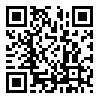
International Journal of Molecular and Cellular Medicine (IJMCM)
Cellular and Molecular Biology Research Center, Babol University of Medical Sciences
BibTeX | RIS | EndNote | Medlars | ProCite | Reference Manager | RefWorks
Send citation to:
URL: http://ijmcmed.org/article-1-577-fa.html
Pathogenesis of odontogenic tumors is not well known. It is important to identify genetic deregulations and molecular alterations. This study aimed to investigate, through bioinformatic analysis, the possible genes involved in the pathogenesis of ameloblastoma (AM) and keratocystic odontogenic tumor (KCOT). Genes involved in the pathogenesis of AM and KCOT were identified in GeneCards. Gene list was expanded, and the gene interactions network was mapped using the STRING software. “Weighted number of links” (WNL) was calculated to identify “leader genes” (highest WNL). Genes were ranked by K-means method and Kruskal-Wallis test was used (P<0.001). Total interactions score (TIS) was also calculated using all interaction data generated by the STRING database, in order to achieve global connectivity for each gene. The topological and ontological analyses were performed using Cytoscape software and BinGO plugin. Literature review data was used to corroborate the bioinformatics data. CDK1 was identified as leader gene for AM. In KCOT group, results show PCNA and TP53. Both tumors exhibit a power law behavior. Our topological analysis suggested leader genes possibly important in the pathogenesis of AM and KCOT, by clustering coefficient calculated for both odontogenic tumors (0.028 for AM, zero for KCOT). The results obtained in the scatter diagram suggest an important relationship of these genes with the molecular processes involved in AM and KCOT. Ontological analysis for both AM and KCOT demonstrated different mechanisms. Bioinformatics analyzes were confirmed through literature review. These results may suggest the involvement of promising genes for a better understanding of the pathogenesis of AM and KCOT.
دریافت: 1395/5/20 | پذیرش: 1395/7/19 | انتشار: 1395/9/17
| بازنشر اطلاعات | |
 |
این مقاله تحت شرایط Creative Commons Attribution-NonCommercial 4.0 International License قابل بازنشر است. |



